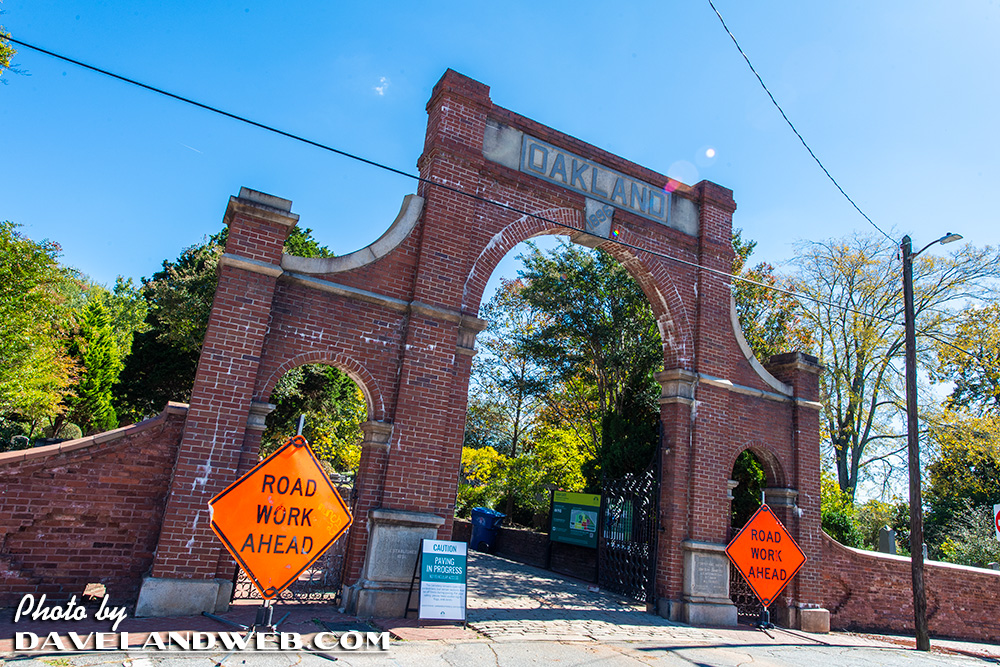
We interupt our normally scheduled Temple Tuesday AND Atlanta History Center posts to celebrate Halloween. It was Margaret Mitchell, author of Gone with the Wind (1936) that got me to walk more than 2 miles from hotel for a visit.

Mitchell and her second husband, John Robert Marsh, are buried together here.

Oakland also is the final resting spot of legendary golfer Bobby Jones.
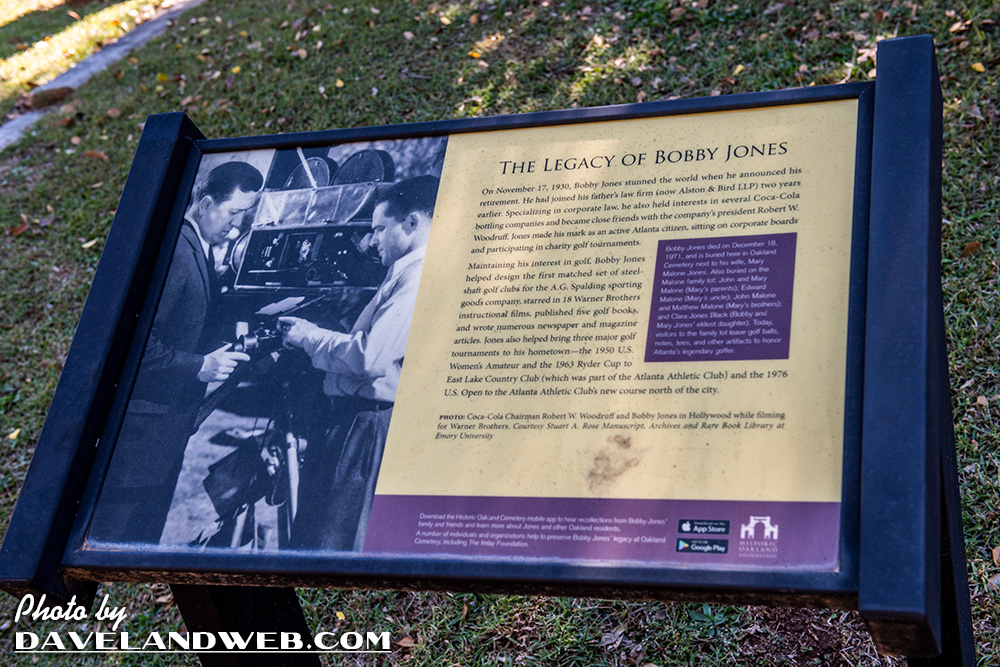
If you need a ball or two, this is the place to get them.
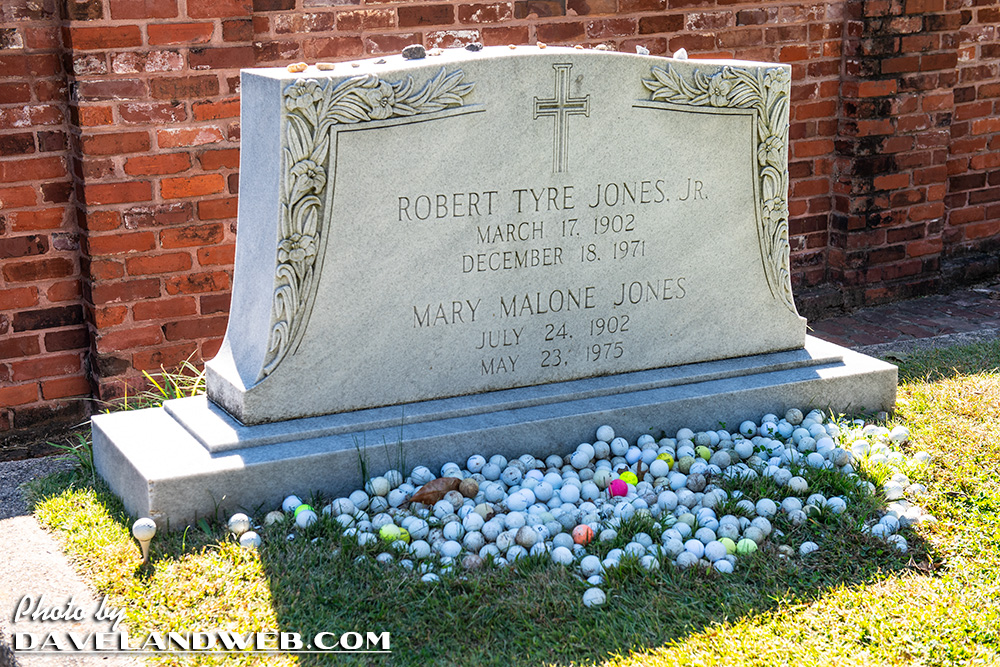
Country music artist Kenny Rogers is also buried here.
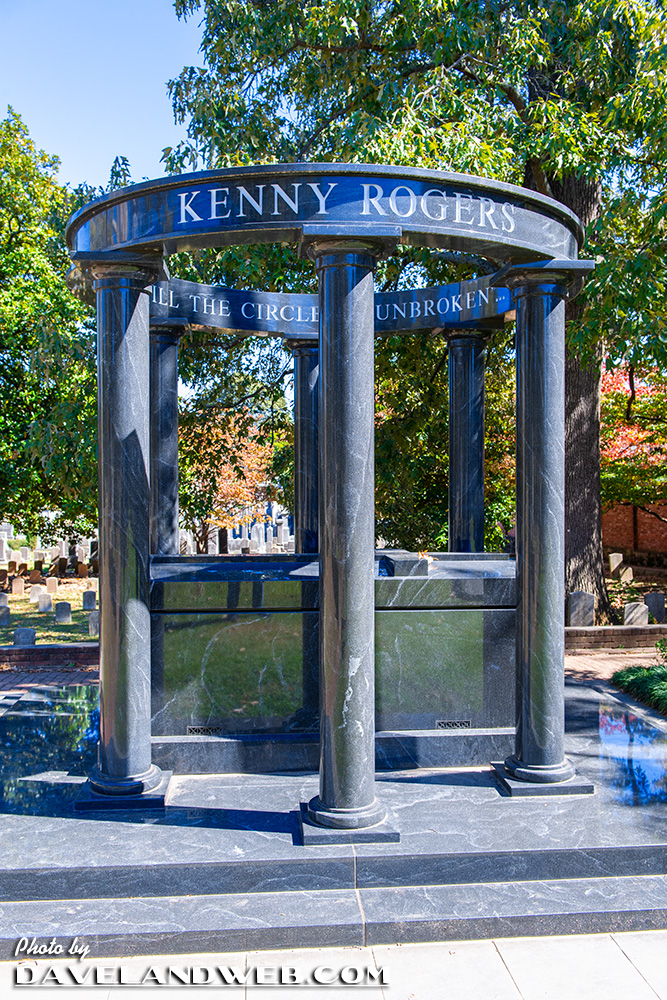
Fittingly, this monument is round, with the title of one his songs (recorded in 2011) inscribed above, “Will the Circle Be Unbroken.” Edited from the Birthplace of Country Music website:
The original version of “Will the Circle Be Unbroken” was a hymn written in 1907 by Ada R. Habershon, with music by Charles H. Gabriel. The words and melody of the verses in the original hymn depart substantially from the way it is usually sung today. A. P. Carter rewrote the song when The Carter Family recorded it in 1935. The sentiment conveyed in both versions is that we have all lost loved ones, but that they have gone to a better place where we will see them again. “Will the Circle Be Unbroken” is an homage to the pioneers of country music and a salute to current artists who honor these diverse roots. The circle is unbroken because the music is handed down from generation to generation.
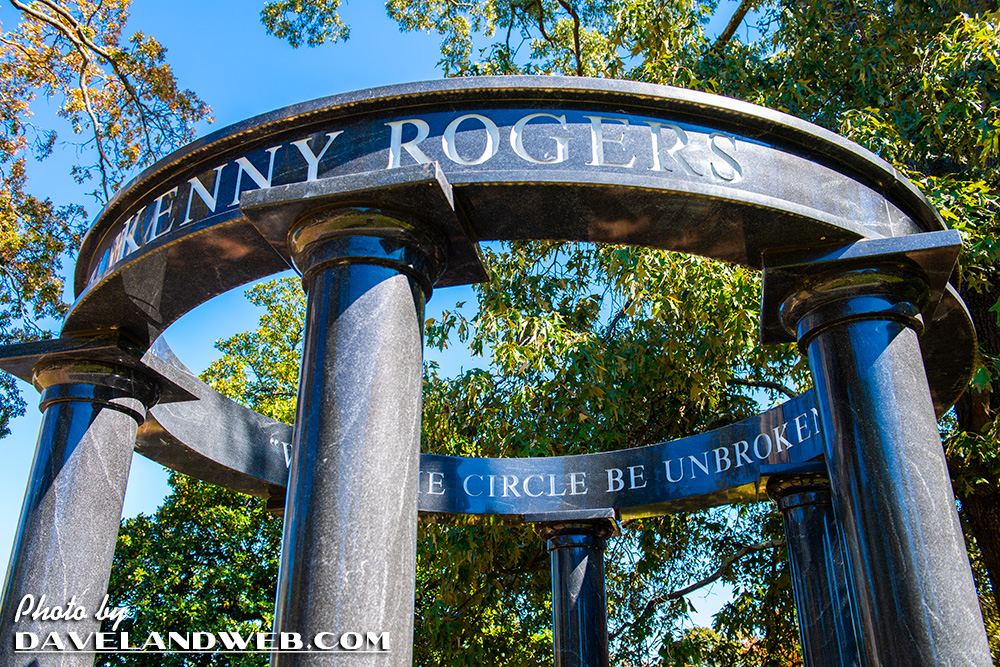
Below is the The Confederate Obelisk.
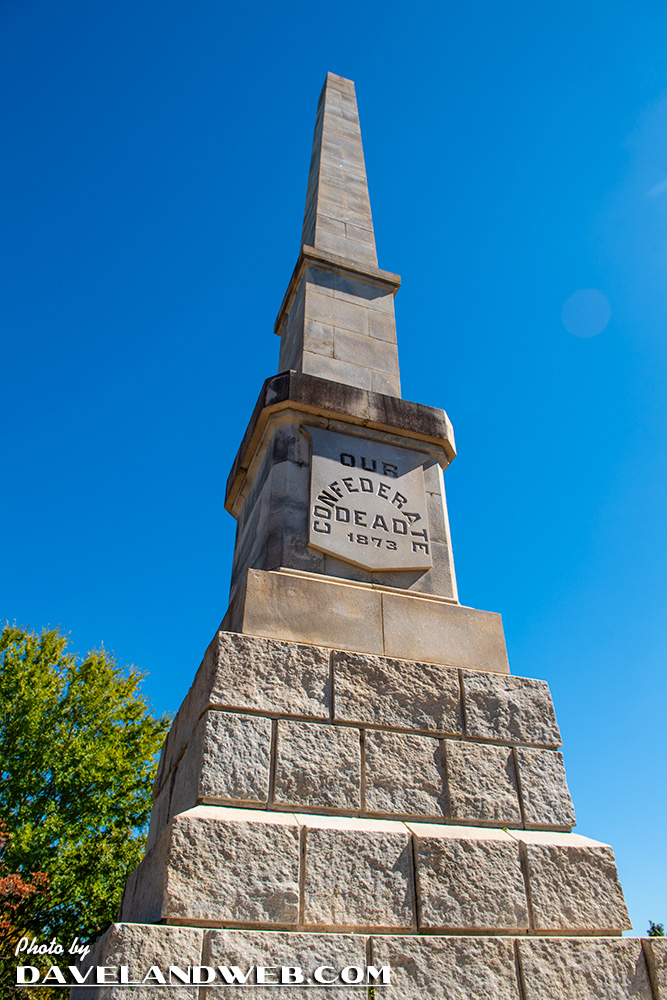
From the nearby signage:
The Atlanta Ladies Memorial Association (ALMA) formed in 1866 with a purpose to “preserve and foster the memory of our Confederate Dead.” The federal government did not fund Confederate burials after the war. Volunteer groups, often organized by women, assumed responsibility for Confederate burials and commemoration. Their efforts shaped public memorialization of the Confederate dead and the Confederate cause for future generations. ALMA arranged for the interment of unknown soldiers at Oakland and commissioned two monuments, the Confederate Obelisk and the Lion of Atlanta. The 65' tall Confederate Obelisk is made of Stone Mountain granite. ALMA laid the cornerstone in 1870 on the day of Confederate General Robert E. Lee’s funeral. The obelisk ranked among the city’s tallest structures when completed. Roughly 15,000 people, almost half of Atlanta’s population, attended the dedication ceremony on Confederate Memorial Day, April 26, 1874. The obelisk became a gathering place for future Confederate Memorial Day ceremonies.
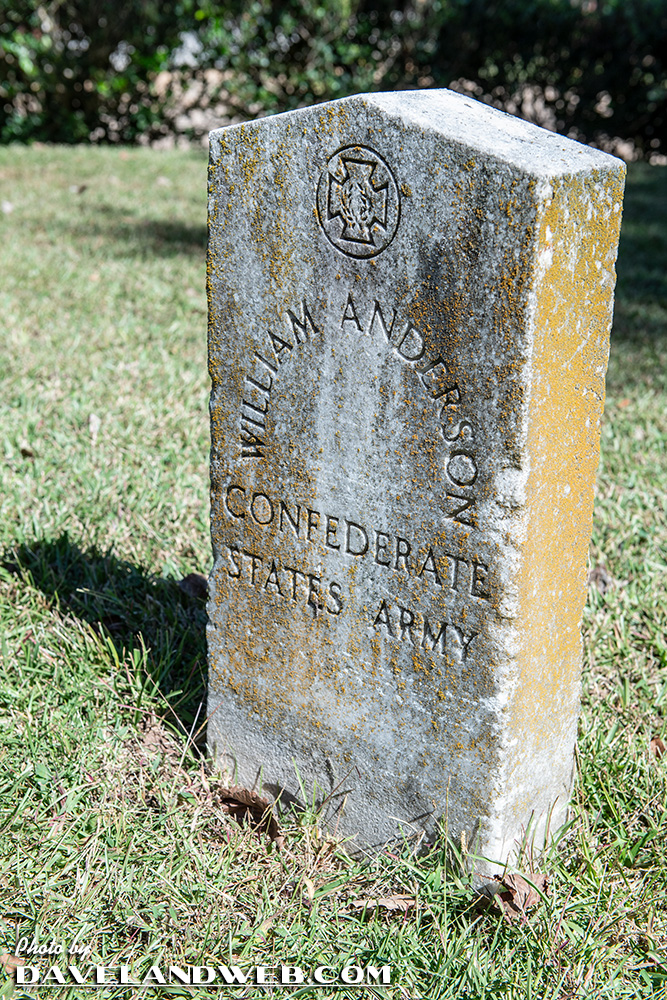
At the bottom of the signage contains this paragraph titled, “The Struggle for Equality”:
As white Southerners built monuments to honor their dead, African Americans continued to fight for their civil rights. From 1865 to 1870, three amendments to the Constitution (the Thirteenth, Fourteenth, and Fifteenth Amendments) were ratified in an effort to establish freedom and political equality for African Americans. State Laws and federal court decisions weakened the power of these amendments. In 1896, the Supreme Court upheld racial segregation laws in Plessy v. Ferguson. The segregation of public spaces, including Oakland, continued until the early 1960s.
Plessy v. Ferguson was a case from 1896 that upheld a Louisiana state law that allowed for “equal but separate accommodations for the white and colored races.” From the archives.gov website:
With the cooperation of the East Louisiana Railroad, on June 7, 1892, Homer Plessy, a mulatto (7/8 white), seated himself in a white compartment, was challenged by the conductor, and was arrested and charged with violating the state law. In the Criminal District Court for the Parish of Orleans, Tourgée argued that the law requiring “separate but equal accommodations” was unconstitutional. When Judge John H. Ferguson ruled against him, Plessy applied to the State Supreme Court for a writ of prohibition and certiorari. Although the court upheld the state law, it granted Plessy’s petition for a writ of error that would enable him to appeal the case to the Supreme Court.
The lone dissent in the vote came from Kentuckian Justice John Marshall Harlan, who wrote, “I am of the opinion that the statute of Louisiana is inconsistent with the personal liberties of citizens, white and black, in that State, and hostile to both the spirit and the letter of the Constitution of the United States. If laws of like character should be enacted in the several States of the Union, the effect would be in the highest degree mischievous.”

There were a number of mausoleums at Oakland, including the one for William Allen Rawson, who died at age 68.
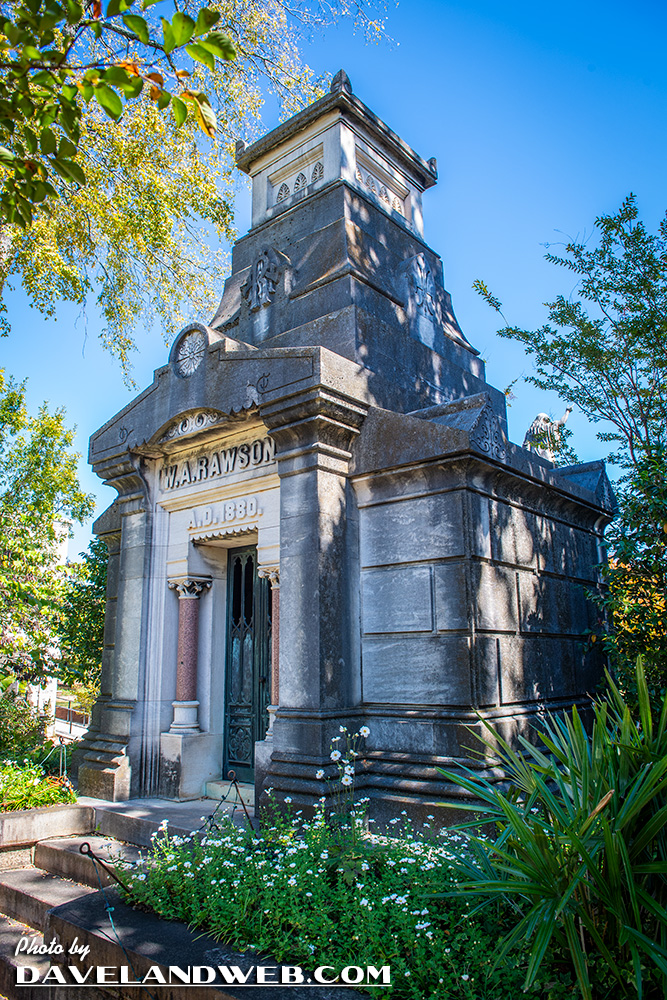
Inside you can see this beautiful stained glass detail.
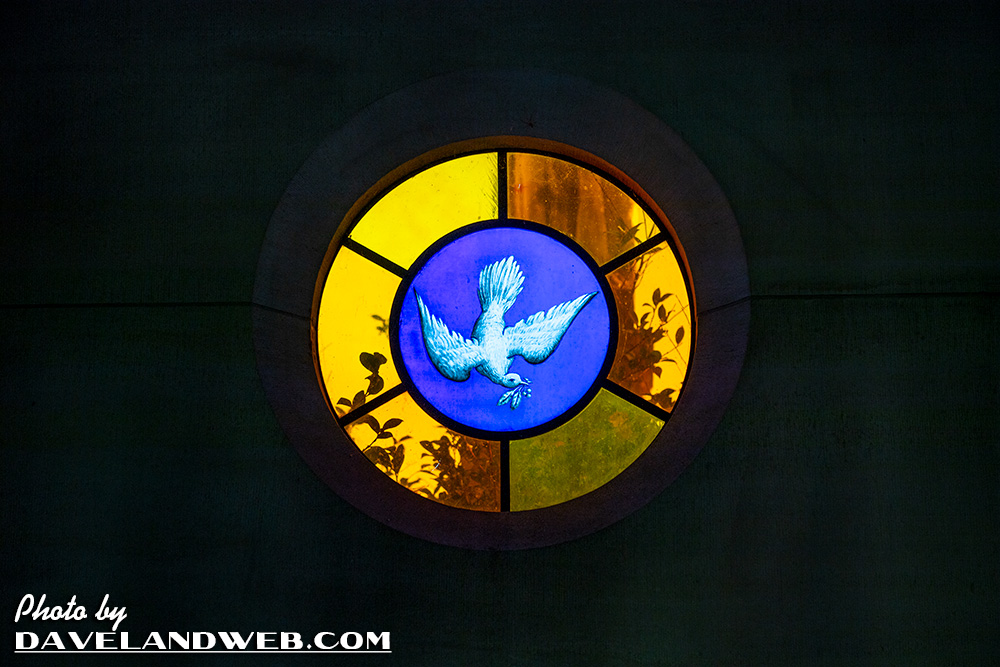
My obsession with cemeteries also has to do with the expressive statuary that you can find in these historic burial grounds.
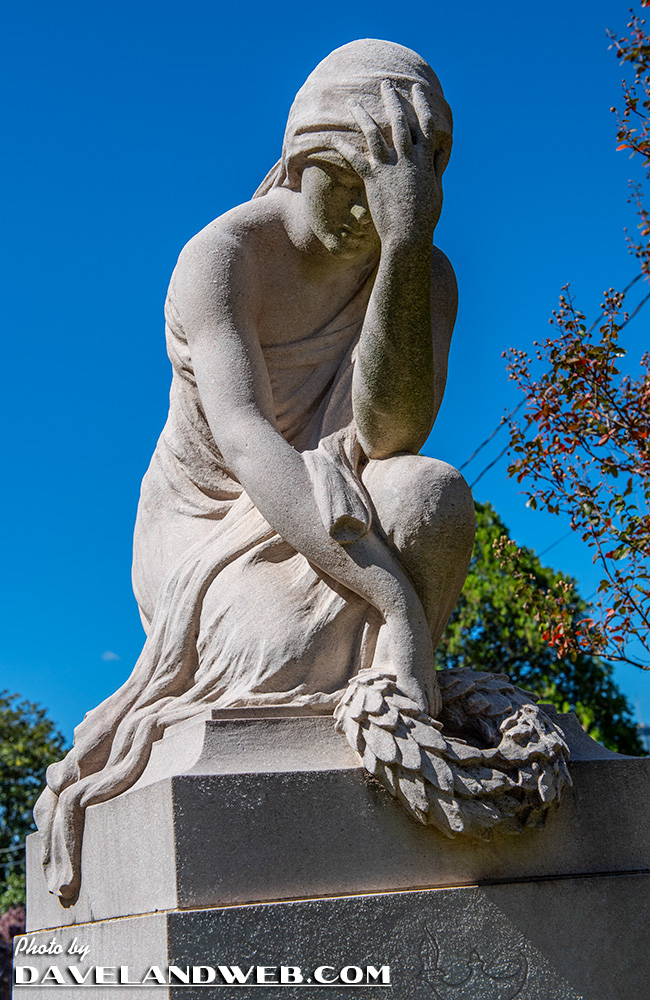
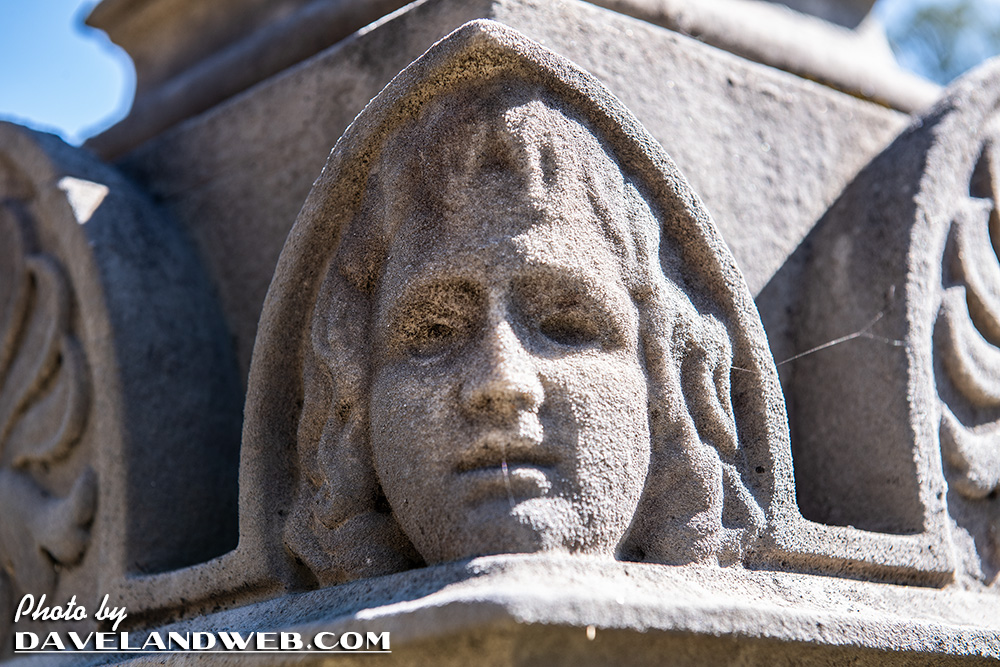
The moss and decay add to the feeling of “living history,” as nature continues to erode away what once was living. Nothing lasts forever, including these monuments to the dead.

Happy Halloween to all who celebrate! I hope you enjoyed this tour of Atlanta’s historic cemetery. See more Oakland Cemetery in Atlanta photos at my main website.

3 comments:
You had me going referencing the 1970s in the Confederate Memorial. What a subtle Halloween gag! Boo to you too!! KS
Dave, thank you for the Oakland Cemetery tour...very interesting, and your pictures are beautiful - especially taken on a lovely, sunny day.
I hadn't realized that Margaret Mitchell died so young, only 48. You wonder if she still had more stories, within her imagination, yet to write. I guess we'll never know.
Happy Halloween! Don't eat too much candy.
Sue
KS - I wish I was that witty. It's called a "typo"!!
Thanks, Sue! On Margaret, she did die young, but about 13 years after GWTW. I think if she had wanted to write much more, she would have done so. As for not eating too much candy…it's too late!
Post a Comment